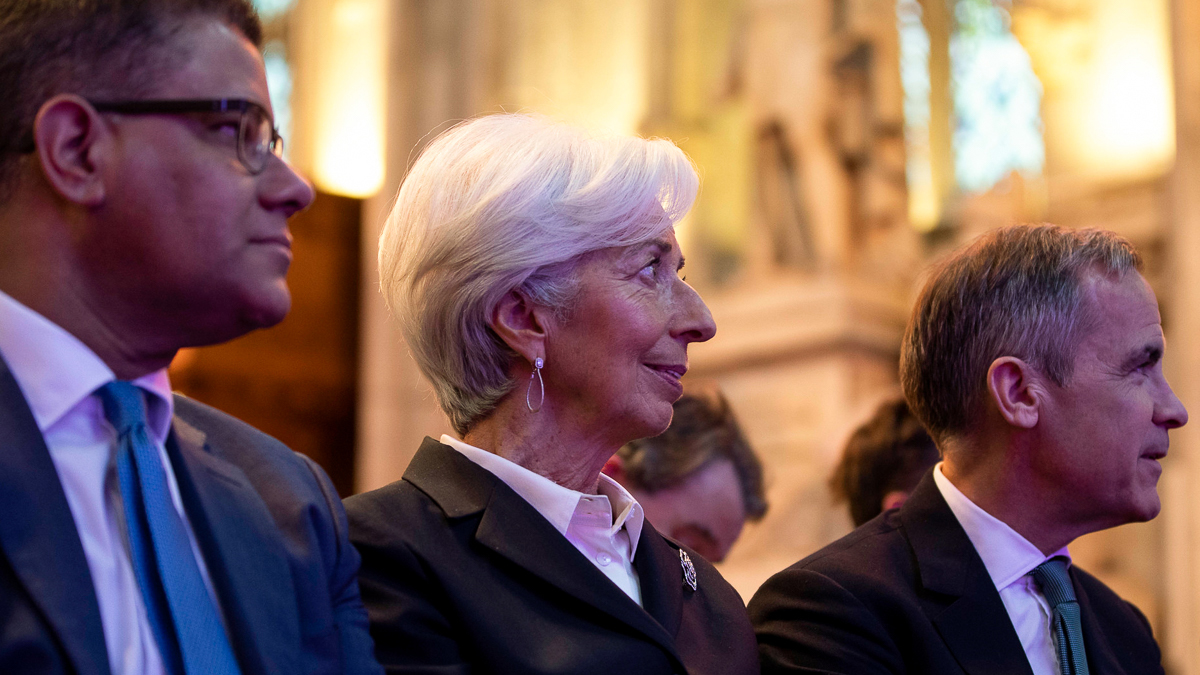With COP27 coming, these women are what we need to break the business-as-usual (mostly male) mold.
As we head toward the next UN global climate talks, COP27, the lack of representation of women in both the leadership of host nations and on national delegations is disturbing. Despite a high-profile campaign at last year’s COP26 to balance the gender gap, there’s little evidence of change. At COP27 in Egypt next November, we have a chance to begin to remedy this problem.
Equal representation at COP27
We recently reported on the U.K.-based organization She Changes Climate’s brilliant — and blindingly obvious — solution to address the gender imbalance at UN climate talks: a joint female and male presidency for every COP meeting. It makes sense. In fact, it makes sense for any large, global decision-making meeting. Why shouldn’t a representative of 50% of the world’s population be at every important negotiating table?
Why shouldn’t a representative of 50% of the world’s population be at every important negotiating table?
But that is not the way it is working at COP. At the previous climate talks in 2021, only 13% of COP26’s delegations were led by women, according to the Women’s Environment and Development Organisation’s (WeDo) gender climate tracker. Men accounted for 74% of speakers in pre-COP finance meetings and 60% of speakers at plenary sessions. Just 11 of the 74 African national representatives were women.
The lack of progress comes despite strong pressure last year from She Changes Climate and women leaders demanding the U.K.-hosted COP26 add women to its leadership. The U.K. ignored their petition and went ahead with a male COP president and two male High-Level Champions. Only two women on the U.K.’s wider COP team were appointed to director roles. Meanwhile, the UN reports that 80% of those impacted by climate change around the world are women.
It looks like history is repeating itself as delegates organize for COP27. Efforts for a greater gender leadership balance are off to a poor start despite the inclusion of the climate-experienced Egyptian Environment Minister Yasmine Fouad. Unfortunately, she is subordinate to a career diplomat, Sameh Shoukry, who will lead the Egyptian delegation despite no significant climate experience.
Climate & Capital will be reporting on efforts by organizations and women leaders working to end the gender imbalance at the next COP meeting in November.
However, we’d first like to take a moment to recognize some of the many ground-breaking, persistent, tireless and amazing women working to ensure women’s voices are heard as we attempt to solve the challenge of our time: climate change. Here’s to encouraging all of them to mentor the next wave of women leaders we need at the table at COP27, 28, 29 and 30 in much greater numbers.
Meanwhile, the UN reports that 80% of those impacted by climate change around the world are women.
For their leadership, thank you to Laurence Tubiana, Christiana Figueres, Patricia Espinosa, Gro Harlam Brundtland, Rachel Kyte, Greta Thunberg, Amina Mohammed, Inger Andersen, Mafalda Duarte, Damilolo Ogunbiyi, Sanda Ojiambo, Sunita Narain, Mary Robinson, Christine Lagarde, Sheikh Hasina, Catherine Howarth, Kate Hampton, Changhua Wu, Mindy Lubber, Vandana Shiva, Wangari Maathai, Farhana Yamin, Connie Hedegaard, Winnie Byanyima, Helen Clark, Sharon O. Ikeazor, Gina McCarthy, Sylvia Earle, Helen Mountford, Laura Tuck, Mia Mottley, Pratha Garkoti, Hilda Heine, Sanna Marin, Debra Roberts, Sharan Burrow, Nicola Sturgeon, Catherine McKenna, Paloma Costa, Kimko Hirata, Agnès Callamard, Pratha Garkoti and Anjali Sharma … to name a few. Click on the CVs of any one of these women and be inspired.
More than a COP problem
It’s not just the UN that has failed to ensure women are fairly represented. Women around the world are still fighting for representation on boards and executive teams, for pay equity and for share ownership in major companies. The semiconductor, energy, transportation and auto industries in particular lag far behind other sectors, with 20% or fewer women in executive positions, according to Swedish gender data company ExecuShe.
A recent ExecuShe study found that women account for only about one-quarter of the top executive roles at S&P 500 companies and, incredibly, control only about 1% of the value of shares held by their fellow male corporate leaders. This means that male executives held in the range of $770 billion of S&P 500 company shares in 2020, while women executives held only about $9 billion.
New EU gender quotas as a step forward
Last week, however, the EU took decisive action and agreed to impose gender quotas mandating that at least 40% of seats on the boards of large European companies be held by women, thanks to backing from key EU countries Germany and France. The new legislation requires that listed companies in all 27 EU member states ensure that women hold 40% of non-executive directors or 33% of board director positions by mid-2026.
The EU initiative is a step forward. However, it comes after a severe setback for the human rights of women with the decision of the U.S. Supreme Court to overturn Roe v Wade. Threats to women’s rights worldwide continue, particularly in Afghanistan, Ukraine, Russia, China, Ethiopia and Turkey. It could be that climate change challenges us to right the imbalance.
Featured image: Bank of England / Flickr


